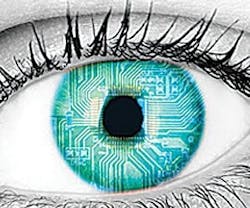Preparing for Biometric Technology
To most people, the term “biometrics” (as applied to the physical security industry) has referred to systems that use biometric technology to control access to physical and logical assets within a building or other physical space, usually by controlling access to the doors to those areas. The solutions range from well-known technology, such as fingerprint readers, to eye retina scanners and hand geometry readers.
Current Biometric Applications
Today, these systems are also being used to identify people who seek to gain access to assets that aren’t protected by doors or buildings. For instance, delivery of healthcare and education to the U.S. population without access to traditional forms of ID, such as state driver’s licenses or valid passports, often requires identification using a biometric device, such as a fingerprint reader. In a recent issue of a local newspaper, a front-page news article reported the use of fingerprint scanners in administering the Free Lunch program at a local school.
Further expanding the conventional definition of biometric-based security are systems that use information to recognize – not control – who accesses buildings and spaces. One technology uses available photos of known “personas non gratis” to recognize these people in or around a property. Known as facial recognition systems, they’re fed information from photos or CCTV systems and taught to find these images in real time.
Developing Trends
The use of biometrics isn’t finding much traction as a universal means of accessing a commercial or industrial space with a large number of users creating an entrance queue, but it is seeing a large growth in the area of intelligence that will spill over to more use in commercial and industrial spaces. Products beginning to be used in the war on terrorism, such as on-the-fly facial recognition, will see R&D performed by high-level government contractors who will refine the technology into an affordable product that can find application in the most mundane commercial uses, such as taking attendance in classrooms or verifying the identity of a check casher at a retail store. What the building community has to know is how to plan for and use these technologies, and that leads to a discussion of the potential for biometric ID in many facets of the building trade.
As federal and state governments produce large-scale infrastructure projects via the economic stimulus package, employers will be required to more accurately identify their employees at government-funded worksites. Construction site entrances will be fewer and more closely controlled using turnstiles and hand-held biometric scanners. Systems capable of producing biometric credentials (while protecting this personal data from hackers) will require more sophisticated construction site security administration. To reduce the impact of these changes, the use of biometric entrance/exit information may also be used to streamline timekeeping.
Since biometrics will almost certainly be required to gain interior access to all federal buildings, as well as many sensitive research and infrastructure buildings, greater entrance area space and more access-control devices must be allocated to reduce queue times.
Facial recognition and other surveillance-based biometric systems require specific positioning and lighting conditions to be effective, and since these surveillance tools are gaining in popularity, there will be a need to accurately engineer the CCTV systems in challenging spaces to take advantage of these technologies.
Jim Webster is president of Trenton, NJ-based Security Design Services Corp. and a 38-year veteran of the security industry.
